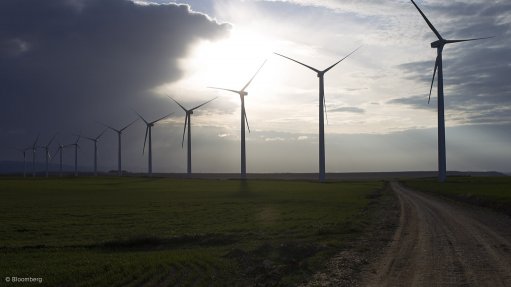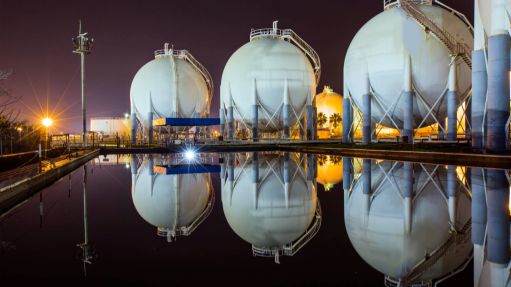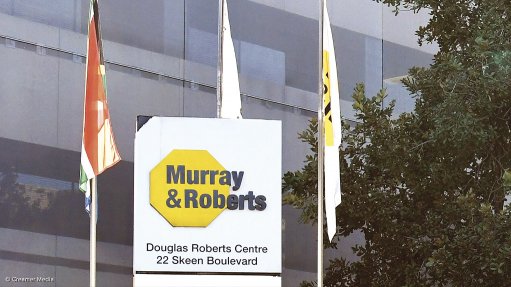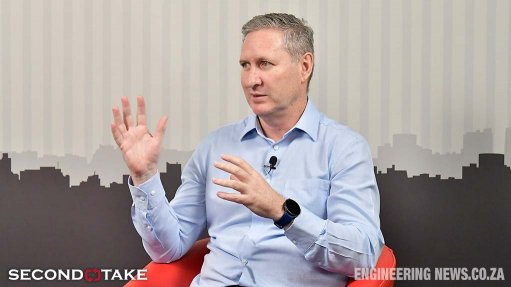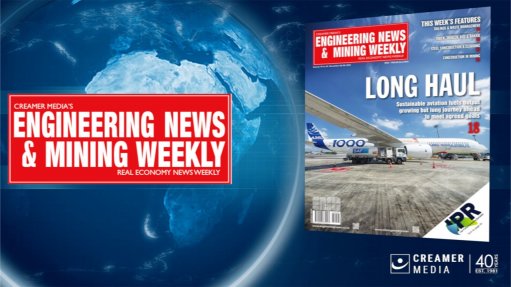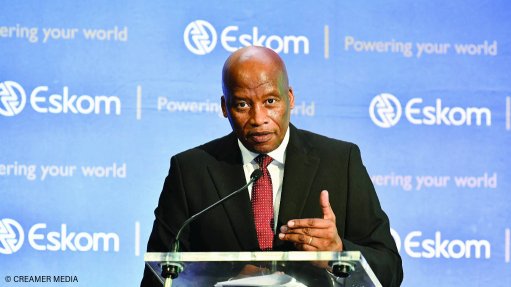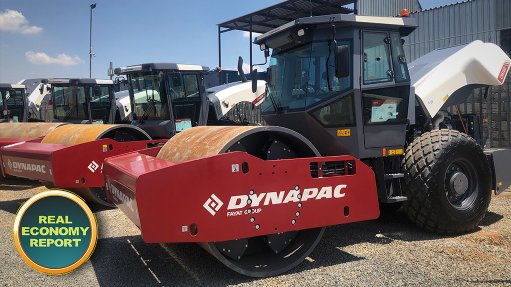Increased generation capacity of wind farms to boost decarbonisation

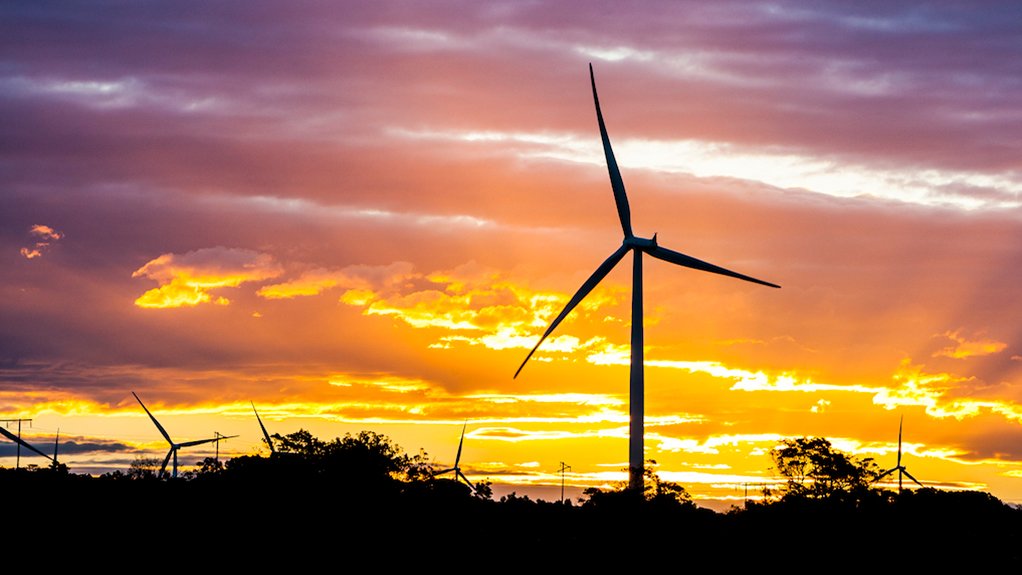

ESCALATING ENERGY Over the past year, operational wind projects have reduced carbon emissions by 8.1-million tons.
NIVESHEN GOVENDER “Wind energy production is an excellent vehicle for direct infrastructure investment and a positive multiplier of economic effects” – Niveshen Govender
The increase in capacity of wind energy generation is a key benefactor for the country to decarbonise its power sector, says South African Wind Energy Association (SAWEA) CEO Niveshen Govender.
Over the past year, operational wind projects have reduced carbon emissions by 8.1- million tons.
There are 34 fully operational wind farms across the country with an installed capacity collectively of just under 3.4 GW.
Despite significant progress with the construction of new wind farms in recent years, progress in green power procurement must continue to be accelerated.
“With accelerated action, the country can expect to see larger utility-scale wind farms, as the contracted capacity range has been increased to a minimum of 50 MW and a maximum of 240 MW,” adds Govender.
This is a significant increase from the 140 MW maximum project capacity that has been in place since the inception of wind farms, he notes.
Further, the lifting of the 100 MW limit for private sector projects without licensing requirements, announced by Mineral Resources and Energy Minister Gwede Mantashe last year, will further stimulate wind power demand, says Govender.
He explains that investment in wind power could provide about R40-billion a year in the next decade, if “smooth procurement and policy” are delivered in line with the country’s Integrated Resource Plan 2019.
A total contribution of R14.1-billion has been committed to socioeconomic development initiatives by the 34 wind projects. Of the total commitment, R13-billion is allocated to the local communities in which the independent power producers operate.
Generation costs for wind energy in South Africa continue to decrease and are now benchmarked at an all-time global low, which Govender states is “remarkable” for this relatively young industry that has faced various economic and policy challenges in its inception stage.
Further, the wind energy transition has the potential to deliver new jobs every year.
“Wind energy production is an excellent vehicle for direct infrastructure investment and a positive multiplier of economic effects,” he adds.
Increasing Capacity Generation
Govender notes that the number-one challenge for the wind energy sector is grid constraints that confront renewable-energy developers.
Grid constraints directly limit new capacity generation and to address South Africa’s energy security, adequate transmission lines are needed to increase power generation, he says.
SAWEA is working with State-owned power utility Eskom for grid capacity – specifically the availability of transmission line – to facilitate new wind power generation is connected to the grid.
A clear plan to unlock grid constraints will support competitive permitted projects, which Govender suggests may be key to maintaining tariffs close to those recently achieved, as the pandemic has increased transport and materials costs, which may endure for a few years.
One of the solutions to tackle the issue of wind energy capacity generation is the development of hybrid energy systems –a combination of wind, solar photovoltaic (PV), battery energy storage systems and dispatchable generation.
As a technology, wind power is compatible with solar PV in hybrid facilities, owing to solar peak daytime generation and wind peak generation later in the day and at night.
Research and historical data demonstrate that these two renewable sources are naturally complementary and key to delivering cost-effective hybrid energy systems, Govender declares.
As renewable energy is variable in nature, it becomes key to combine diverse energy sources and technologies and use their complementarities to form a hybrid facility, he comments.
Energy planning, system balancing, system modernisation and system optimisation then become key factors to a successful end.
Govender concludes that amid grid-constraint challenges and the goal to make wind energy a primary energy resource, SAWEA is considering the feasibility of offshore wind farms and how that could possibly add value to the energy mix.
Comments
Press Office
Announcements
What's On
Subscribe to improve your user experience...
Option 1 (equivalent of R125 a month):
Receive a weekly copy of Creamer Media's Engineering News & Mining Weekly magazine
(print copy for those in South Africa and e-magazine for those outside of South Africa)
Receive daily email newsletters
Access to full search results
Access archive of magazine back copies
Access to Projects in Progress
Access to ONE Research Report of your choice in PDF format
Option 2 (equivalent of R375 a month):
All benefits from Option 1
PLUS
Access to Creamer Media's Research Channel Africa for ALL Research Reports, in PDF format, on various industrial and mining sectors
including Electricity; Water; Energy Transition; Hydrogen; Roads, Rail and Ports; Coal; Gold; Platinum; Battery Metals; etc.
Already a subscriber?
Forgotten your password?
Receive weekly copy of Creamer Media's Engineering News & Mining Weekly magazine (print copy for those in South Africa and e-magazine for those outside of South Africa)
➕
Recieve daily email newsletters
➕
Access to full search results
➕
Access archive of magazine back copies
➕
Access to Projects in Progress
➕
Access to ONE Research Report of your choice in PDF format
RESEARCH CHANNEL AFRICA
R4500 (equivalent of R375 a month)
SUBSCRIBEAll benefits from Option 1
➕
Access to Creamer Media's Research Channel Africa for ALL Research Reports on various industrial and mining sectors, in PDF format, including on:
Electricity
➕
Water
➕
Energy Transition
➕
Hydrogen
➕
Roads, Rail and Ports
➕
Coal
➕
Gold
➕
Platinum
➕
Battery Metals
➕
etc.
Receive all benefits from Option 1 or Option 2 delivered to numerous people at your company
➕
Multiple User names and Passwords for simultaneous log-ins
➕
Intranet integration access to all in your organisation








